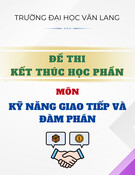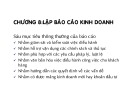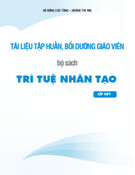HƯỚNG DẪN THỰC HIỆN ĐÁNH GIÁ ĐỊNH KỲ
Môn Tiếng Anh
1. Nguyên tắc của đánh giá định kỳ môn tiếng Anh tiểu học:
- Đánh giá định kỳ cần hướng tới mục tiêu phát triển giao tiếp, thực hiện đánh giá
cả 4 kỹ năng: Nghe, Nói, Đọc, Viết.
- Bài kiểm tra Nghe, Đọc, Viết cần mang tính đại diện cho toàn bộ các nội dung đã được học trong học kỳ/năm học đó và được thực hiện trong một buổi không quá 35 phút.
- Có thể tách riêng hoặc gộp chung kỹ năng Đọc và Viết với học sinh lớp 3 và 4.
- Kiểm tra kỹ năng Nói được tiến hành riêng trước hoặc sau bài kiểm tra Nghe, Đọc và Viết. Nếu không bố trí được thời gian để thi nói riêng, giáo viên có thể linh hoạt sử dụng kết quả luyện nói của học sinh trong quá trình đánh giá thường xuyên và bổ sung thêm các yêu cầu kiểm tra (nếu cần) để lấy điểm kỹ năng Nói cho học sinh.
- Các bài kiểm tra cần được thiết kế theo 4 mức độ nhận thức được quy định trong Thông Tư 22/2016/TT-BGDĐT. Tỷ lệ các mức độ nhận thức trong bài kiểm tra do giáo viên quyết định tùy thuộc vào thực tế dạy – học.
- Giáo viên chủ động lựa chọn nhiệm vụ đánh giá (loại hình bài tập) và số lượng câu hỏi phù hợp với kiến thức kỹ năng cần đánh giá. Nên sử dụng từ hai đến bốn loại nhiệm vụ đánh giá cho mỗi kỹ năng, hai đến năm câu hỏi cho mỗi nhiệm vụ đánh giá và tổng không quá 40 câu hỏi cho một bài kiểm tra giấy.
- Với học sinh học lớp 3, bài kiểm tra định kỳ cần tập trung nhiều vào kỹ năng Nghe và Nói (khoảng 40% Nghe, 20% Nói) phù hợp với giai đoạn mới tiếp cận ngôn ngữ. Tỷ lệ Nghe trong bài kiểm tra giảm dần, tỷ lệ bài Đọc, Viết tăng dần ở lớp 4. Ở lớp 5, tỷ lệ Nghe, Nói, Đọc và Viết ngang bằng nhau (25% cho mỗi kỹ năng).
- Có thể sử dụng định dạng bậc 1 (theo Quyết định số 1479/QĐ-BGDĐT ngày 10/5/2016 Ban hành định dạng đề thi đánh giá năng lực sử dụng tiếng Anh bậc 1 theo Khung ngoại ngữ 6 bậc dùng cho Việt Nam) để đánh giá đầu ra học sinh lớp 5 (cuối học kỳ II) và khảo sát đầu vào học sinh lớp 6. (Lưu ý: Không sử dụng định dạng này để đánh giá định kỳ trong năm học).
- Học sinh lớp 3, 4, 5 học dưới 4 tiết/tuần không dùng chung đề kiểm tra với học sinh lớp 3, 4, 5 học đủ 4 tiết/tuần trở lên. Có thể dùng chung định dạng bài kiểm tra nhưng đánh giá theo các nội dung đã học trong học kỳ/năm học một cách phù hợp với thời lượng.
- Với học sinh lớp 1, 2 làm quen với tiếng Anh, bài kiểm tra tập trung chủ yếu vào
đánh giá kỹ năng Nghe và Nói với thời lượng có thể ít hơn 35 phút (20-30 phút).
1
2. Cách thức lựa chọn nhiệm vụ đánh giá (assessment tasks)
- Cần ưu tiên các nhiệm vụ đánh giá giúp đánh giá khả năng sử dụng ngôn ngữ (mức độ nhận thức 2, 3 và 4) hơn là nhận biết kiến thức (mức 1). Mức độ 1 có thể sử dụng nhiều trong quá trình luyện tập và đánh giá thường xuyên.
- Các nhiệm vụ đánh giá cần tiệm cận tối đa với chuẩn đầu ra bậc 1 Khung năng lực ngoại ngữ dùng cho Việt Nam (tương đương cấp độ A1 Khung tham chiếu châu Âu về ngôn ngữ).
- Nhiệm vụ đánh giá phải đơn giản, quen thuộc với học sinh tiểu học. Không sử
dụng nhiệm vụ đánh giá mới, học sinh chưa được làm quen trong bài kiểm tra.
- Giáo viên có thể tham khảo các nhiệm vụ đánh giá thường dùng sau đây để lựa chọn đưa vào bài kiểm tra định kỳ. Lưu ý số lượng câu hỏi trong mỗi nhiệm vụ đánh giá hoàn toàn có thể thay đổi tăng hoặc giảm nhưng thông thường không nhỏ hơn hai và không quá năm câu (Bảng sau đây lấy ví dụ 4 câu cho 1 nhiệm vụ đánh giá).
2.1. Nhiệm vụ đánh giá cho kỹ năng Nghe:
Task Input Expected response/ Item type
a picture of 4 things to colour 1. Listen and colour
Colouring the objects as requested in the recording a recording of 4 short sentences (delivered at slow speech pace), each repeated twice
An example is provided after the instructions.
a set of 4 images of common things; 2. Listen and match
a set of numbers from 1 – 4;
Matching the number and the image which best describes what is heard.
and a recording of 4 short descriptions (delivered at slow speech pace), each repeated twice.
An example is provided after the instructions.
4 sets of 3-short responses to certain questions or statements which will be heard; and 3. Listen and tick/circle A, B or C Ticking/circling the best response to what is heard.
a recording of 4 questions or statements (delivered at slow speech pace), each repeated twice
or or 4 sets of 3 words or 3 sentences
A recording of 4 words or 4 senteces (delivered at slow speech pace), each repeated Ticking/circling the word or sentence that is heard
2
twice.
An example is provided after the instructions.
4. Listen and tick the picture a set of 4 questions, each goes with 3 pictures of daily activities, objects, people and things; and Ticking the picture / image which best describes the conversation.
a recording of 4 two-turn conversations (delivered at speech pace of about 160 words/minute), each repeated twice.
An example is provided after the instructions.
a set of 4 sentences, each accompanies 2 boxes (Right and Wrong); and 5. Listen and tick Right or Wrong Ticking the Right or Wrong box according to the content heard.
a recording of simple, short conversation, talk, instruction or description (delivered at speech pace of about 160 words/minute), repeated twice.
An example is provided after the instructions.
4 sets of 2-short responses to certain questions which will be heard; and
6. Listen and tick the correct answer Ticking the box containing the correct answer according to the content heard. a recording of 4 questions (delivered at slow speech pace), each repeated twice.
An example is provided after the instructions.
7. Listen and number a set of 4 images of daily activities, objects, people
Writing numbers 1-4 according to the order of the images described.
a recording of 4 short statements or dialogue, description (delivered at slow speech pace), each repeated twice.
An example is provided after the instructions.
8. Listen and complete Writing the words to complete the sentences.
a set of 4 sentences, each has a lined blank (the number of lines indicates the number of letters in the word test takers have to complete and the first letter is already given); and
a recording of short statements (delivered at slow speech pace), each repeated twice.
An example is provided after the instructions.
2.2. Nhiệm vụ đánh giá cho kỹ năng Đọc
3
Tasks Input Expected response / Item type
A picture of 4 things to colour 1. Read and colour
A short paragraph of 40-50 words Colouring the objects as being described in the paragraph.
Test takers read the paragraph and colour the objects as they are described in the paragraph.
- A set of 4 short, simple expressions/ sentences.
2. Match descriptions with words - A set of 4 labeled images. Matching the expressions/sentences with the images.
Test takers read a set of 4 short, simple expressions/ sentences. Test takers match each set with a word from the given set of 4 labeled images. An example is provided after the instructions.
- A set of 4 words Matching the words with pictures 3. Match pictures with words - A set of 4 pictures
Test takers read a set of 4 words then match each word with a picture. An example is provided after the instructions.
- A picture. 4. True or False
Deciding whether the statements are True or False.
- A set of 4 sentences/ statements about the picture. Test takers read a short text of about 40-70 words, and a set of 4 sentences/ statements about the text. Test takers decide whether the statements are True or False according to the text. An example is provided after the instructions.
- A text of 80-100 words about a topic familiar to test takers 5. Read and tick/circle A, B, or C Ticking/circling the correct option A, B or C.
- A set of 4 questions about the details in the text. Each question has three options A, B, and C.
Test takers read the text and tick the box containing the letter or circle the letters of the correct option.
An example is provided after the instructions.
4
6. Re-order - A picture of daily, simple situations/ story.
Re-arranging the turns into the correct order. - A set of 4 jumbled turns of a conversation related to the picture/ story.
Test takers look at the picture, read the set of 4 jumbled sentences and re-arrange the sentences into the correct order. Either the first or the last sentence of the story or the first/last turn of the conversation is provided as an example.
An example is provided after the instructions.
7. Gap-fill
Filling the gaps with the correct words. - An incomplete 50-80 word descriptive or narrative text, poster, simple instruction, simple letter, message with 4 gaps.
- A set of 5 words prompted by images.
Test takers read an incomplete 50-80 word, text, poster, simple descriptive or narrative instruction, simple letter, message with 4 gaps. They then choose 4 out of a list of 5 given words prompted by 5 images to fill in the gaps.
An example is provided after the instructions.
2.3. Nhiệm vụ đánh giá cho kỹ năng Viết Input Tasks Expected response / Item type
- 4 short sentences of 5-10 words each of which has a gap prompted by a picture; or Writing the correct word for each gap.
1. Write correct words with pictorial hints - A given paragraph of 25-40 words about a familiar topic such as family, friends, school, etc. with 4 gaps prompted by images
Test takers read short sentences or a paragraph and complete 4 gaps. Each gap has a picture/ image as hint. Test takers are required to find the right word to complete the sentences/ paragraph.
An example is provided after the instructions.
- 4 words with jumbled letters, each of which is prompted by a picture. Writing the correct word from jumbled letters. 2. Order the letters to make a Test takers are required to rearrange the letters to
5
make a correct word.
complete word. An example is provided after the instructions.
4 lines of jumbled words and picture cues.
Writing the give jumbled words in the correct order to create a sentence.
3. Order the words to make a complete sentence For each test item, there are approximately 4 to 7 words given in a jumbled order and a picture cue. Test takers are required to rearrange the words to create a correct sentence.
An example is provided after the instructions.
- Written instructions on a simple type of transactional writing and a given context about familiar topics such as family, friends, pets, etc. Writing a complete letter / invitation / text message / postcard
/ - Some written hints in the form of questions or short expressions. 4. Write a(n) letter / invitation / text message postcard
Test takers read the instructions to know the type of writing they have to produce. Information about the required length of the text (20-40 words) and its purpose is also given. Some questions are provided as hints for the writing. The first sentence of the required text is provided.
2.4. Nhiệm vụ đánh giá cho kỹ năng Nói
6
Input (from Teacher/Examiner) Tasks Expected response (from test takers)/ Item type
A set of 4 pictures about careers / objects / colours… 1. Look and say Identifying the careers / objects / colours…which are given picture cues.
Ask test takers to speak out the name of careers/objects/colours…
Ask 4 questions:
2. Respond to physical prompts Understanding questions about the objects and following instructions given by the examiner.
- about concrete physical objects familiar to test takers. These questions require physical response with limited oral language production.
- about the number, position, colour, size, shape of concrete physical objects. These questions require extended oral response. Give 2 simple instructions relating to the objects.
Open-ended questions
Ask 4 questions: 3. Get to know each other
Understanding and responding to personal questions in an interactive way.
- 2 questions are greeting and personal information (name, age) - 2 questions are about the test taker’s daily routines, time, hobby (favourite subject/ game/…), family, best friend, school, house, food, pets, house chores.
A set of concrete objects inside a carton box
4. Talk about afamiliar object
Ask test takers 4 questions when they take an object out of the box - Identifying the objects which are given in a box and providing limited oral response to show comprehension.
- Describing in extended oral responses the number, position, colour, size, shape of concrete physical objects.
7
A picture 5. Describe a picture - Describing the activities and characters in the drawing;
Test takers look at a given photo/ drawing picturing scenes or situations familiar to the test takers.
- Referring the topic of the picture to the test taker’s daily life.
Ask 4 questions relating to that photo/drawing. These questions require the test takers to describe, comment on the activities and characters in the photo/drawing.
Depending on the topic of the photo/drawing, ask one more follow-up question.
Test takers are required to talk about familiar topics
- Talking about familiar topic like: describing house, talking about family/ best friend/ pet… more freely. 6. Talk about familiar topics.
Test takers are supported by guided questions if they are needed.
3. Ví dụ về các mức độ trong các câu hỏi đánh giá.
Lưu ý:
- Có những vùng kiến thức kỹ năng không có câu hỏi ở mức độ cao.
- Có những loại hình bài tập không có đầy đủ cả 4 mức độ nhận thức.
VD: Loại hình đánh giá sử dụng trong kiểm tra Nói như: Talk about your family/best friend… với hỗ trợ bằng các câu hỏi gợi ý (nếu cần) từ giáo viên thường sẽ ở mức 3 hoặc 4 tùy vào kiến thức kỹ năng học sinh học đến thời điểm đó và chủ đề được lựa chọn. Với loại hình đánh giá này sẽ không được xếp ở mức 1 và 2.
- Trong cùng một loại hình bài tập, các câu hỏi có thể có các mức độ nhận thức khác nhau để giáo viên có thể xác định được mức độ hoàn thành nhiệm vụ khác nhau của học sinh.
VD: Trong dạng bài Listen and tick giáo viên có thể soạn ở các mức độ khác nhau
như sau:
1
A B C
8
2
A B C
3
A B C
Recording
1. I like elephants very much because they are so big 2. Today I am wearing orange T-shirt 3. David, the outside today is very cold. I don’t want you to get a cough. – OK, mom.
Don’t worry
Như vậy:
+ Câu 1 (mức 1-nhận diện), HS sẽ thấy ngay từ khóa elephant trong câu nghe và dễ dàng nhận ra bức tranh tương ứng để tick và không cần phải hiểu nghĩa hết câu nghe cũng như 2 bức còn lại.
+ Câu 2 (mức 2-hiểu): HS buộc phải hiểu nghĩa của cụm danh từ orange T-shirt trong phần nghe và 3 từ của bức tranh. Yếu tố giống nhau về màu cam trong 3 bức tranh sẽ cho thấy nếu HS không hiểu sẽ không làm được.
+ Câu 3 (mức 3-vận dụng): Ở câu này, đoạn ghi âm không nhắc đến từ khóa coat. HS phải nghe, hiểu và từ kinh nghiệm cuộc sống để quyết định xem lựa chọn nào là phù hợp trong hoàn cảnh này. Tuy nhiên, ví dụ này có thể là mức 4 nếu đoạn ghi âm tăng lượng từ khó lên và trước đó giáo viên chưa hề cho học sinh luyện tập ở các tình huống tương tự như trong câu hỏi.
- Cùng một đối tượng ngôn ngữ cần đánh giá, GV có thể nâng mức độ khó tùy thuộc vào trình độ học sinh (lớp khá sẽ để ở mức độ cao và lớp trung bình để ở mức độ thấp).
VD: Trọng tâm cần đánh giá là khả năng nhớ/sử dụng từ hat trong kỹ năng Đọc.
+ Mức độ 1: Read and match
Hat
9
+ Mức độ 2: Read and choose
A. Thing you wear on your head.
B. Thing you use to write.
C. Thing you wear on your hands.
+ Mức độ 3: Read and choose one word to fill in the blank.
computer hat chicken toy
Mom: Hey little girl, it’s very sunny today. Don’t forget to bring water and ………
with you.
Nancy: Thank you, mom!
- Việc phân định ranh giới giữa các mức độ của câu hỏi đánh giá trong bảng sau
đây mang tính tương đối, đôi khi có thể không thực sự rõ ràng giữa hai mức gần nhau.
- Tham khảo bảng sau về các mức độ về nhận thức theo từng kỹ năng.
Bảng phân chia mức độ thực hiện các kỹ năng và ví dụ minh họa
Mức 2
Mức 3
Mức 4
Mức/KN Nghe
Mức 1 - Nghe nhận từ, biết được cụm từ, câu đơn giản. - VD: Listen and tick. từ Nghe window và tick vào đúng chữ vừa nghe trong các phương án đưa ra: door, window, table.
- Nghe hiểu được từ, cụm từ, câu, hội thoại đơn giản. - VD: Listen and choose. Nghe câu hỏi và trả lời ngắn: Who is this? It’s my sister và chọn 1 trong 4 tương tranh bức ứng: con mèo, chàng trai, cô gái, bông hoa.
I
Đọc
Đọc và nhận lại biết, nhắc
Đọc hiểu và trình bày, giải thích được
- Nghe hiểu câu hỏi, đoạn hội thoại, văn bản ngắn và xử lý thông tin yêu cầu có vận dụng kiến thức kỹ năng của bản thân ở một tình huống tương tự với tình huống đã học. - VD: Listen and choose. Nghe câu hỏi What do you have for your dinner? Và chọn 1 trong 3 câu trả lời: rice and fish; We go to a restaurant; like swimming. Đọc hiểu và xử dụng thông tin bài đọc và
- Nghe hiểu đoạn hội thoại, mô tả…và xử lý các thông tin ở mức độ khó và linh hoạt hơn như trả lời câu hỏi, tìm tranh có nhiều chi tiết giống nhau… - Listen and tick. Nghe đoạn hội thoại: I can’t see Mary. So many people here. – Ah..could you see a girl in black jeans and pink …oh no, red blouse? – Has she got long hair? – Yes, she’s pretty. You see. HS chọn giữa 4 bức tranh trong đó các nhân vật nữa mặc đồ rất giống nhau, có người mặc áo cánh hồng, áo đỏ..để gây nhiễu, buộc HS xử lý thông tin nhiều. Đọc hiểu và vận dụng thông tin bài đọc và kiến thức có sẵn để
10
kiến thức có sẵn để giải quyết vấn đề. - VD: Read and fill in the blank. HS phải đọc hiểu và điền các từ còn thiếu vào chỗ trống (có thể hỗ trợ bằng việc cho trước một số từ hoặc gợi ý bằng tranh)
like
thông tin trong bài đọc. - VD: Read and choose: Iam round. I help you to keep away from the rain and the sun HS chọn 1 trong 4 bức tương tranh ứng với câu vừa đọc: Cái ô, đồng hồ, quả táo, mặt trời
Viết
is Jame’s
được nội dung, tin của thông bài đọc. - VD: Read and choose. HS đọc đoạn văn bản ngắn trong đó có câu he doesn’t like ice cream và chọn câu trả lời cho câu hỏi: Does he ice cream? A. Yes, he does. B. No, he doesn’t. Viết lại được các từ đơn lẻ, câu đơn giản đã học có gợi ý. - VD: Fill in the blank h_t
Sử dụng kiến thức đã học để viết câu hoặc đoạn văn bản (có gợi ý) - VD: Complete the sentence using given words. Mark/like/go fishing/weekend/ father
Viết trình bày lại kiến thức đã học theo cách hiểu của cá nhân (có gợi ý). - VD: Fill in the blank: Today ……… birthday.
giải quyết vấn đề hoặc đưa ra những phản hồi hợp lý ở mức độ khó hơn. - VD: Read and choose: Micheal comes to the birthday party but nobody talks to him. There are many cup cakes that he likes but John doesn’t want them. He stays for a while then he walks home because he is not happy. Why does John leave the party? A. Because he eats many cup cakes B. Because he stays for a while then he walks home. C. Because he feels sad when he talks to nobody Sử dụng kiến thức đã học để viết về các chủ đề quen thuộc. - VD: Write a letter of about 30- 35 words to your friend telling him/her about your house. You may use: + Is your house big/small? + What colour is it? + How many rooms are there? What are they?...
Nói
tự với
the
Trình bày một bài nói ngắn về tình huống thực có liên quan đến chủ để đã học nhưng không có gợi ý; trả lời các câu hỏi đòi hỏi tư duy, tranh luận, phản biện… - VD: Tell me about your class? What subject do you like best? Why?
your
Trả lời các câu hỏi đơn lẻ rất đơn giản có một phương án trả lời; - VD: + How are you today. + What’s mother name?
Trả lời các câu hỏi về tình huống thật nhưng trương tình huống đã học; mô tả tranh có gợi ý… - VD: Describe picture, you may use: + Who are the people? + What are they doing?...
Nói tên được vật ở mức độ từ đơn lẻ hoặc câu rất đơn giản. - VD: Giáo thẻ viên giơ màu sắc/con vật… và học sinh nói tên các màu/con vật.
4. Ví dụ về ma trận đề kiểm tra lớp 3, học kỳ 2 (Chuẩn kiến thức kỹ năng trong ma trận đề này dựa vào Chương trình tiếng Anh tiểu học tại Quyết định 3321/QĐ-BGDĐT ngày 12/8/2010).
Lưu ý: Đây là ma trận đề tham khảo. Giáo viên sẽ hoàn toàn chủ động quyết định:
11
- Chuẩn kiến thức kỹ năng cần đánh giá (căn cứ vào Chương trình tiếng Anh tiểu
học, tài liệu giảng dạy và thực tế dạy học);
- Tỷ lệ giữa các mức độ về nhận thức (căn cứ vào mục đích kiểm tra và trình độ
học sinh);
- Hình thức và số lượng các nhiệm vụ đánh giá.
- Số câu hỏi trong mỗi nhiệm vụ đánh giá và điểm số.
- Việc xây dựng một ma trận đề kiểm tra có thể tham khảo các bước sau :
Bước 1 : Liệt kê các chủ đề, cấu trúc và từ vựng cần kiểm tra.
Topics Sentence patterns Vocabularies
for - Family, father ; - Family
What do you have breakfast ? - Food and drink ;
- Orange juice, breakfast, chicken, eat, cook, lunch, noodle, egg; What time do you go to bed ?
How is the weather today ? clock, school, - School things/subjects ; - Bag, English ; What do you want to be ? - Pets, animals ; - Rabbit, fish, tiger, hen What is it ? - Career ; - Singer, favourite your - Activities ; What’s season/food ?
- Play the piano, like to, go to the beach, go picnic… ; Why do you like… ? - Weather ; What colour/shape is it ? - Weather, season, summer, hot, sunny, warm, What are they doing ? - Colour ; - Orange ; They are… - Toys. - Robot, kite. He is…
I play football three times a week.
My hobby is…
Bước 2: Liệt kê các kỹ năng cần đánh giá, phân chia kiến thức ngôn ngữ cần đánh
giá vào các kỹ năng và các chuẩn cần đánh giá KTKN ở mỗi mức độ nhận thức.
Mức 2
Mức 3
Mức 4
KN
Mô tả kỹ năng
Mức 1
Nghe từ đơn tìm lẻ và đúng tranh
Nghe câu đơn có chứa từ và tìm đúng tranh
Nghe Nghe phát hiện được các từ sau trong câu : orange juice, family, play piano, the sunny.
Nghe đoạn văn bản có câu chứa từ hoặc các từ gần nghĩa. HS nghe, hiểu và
Như mức 3 nhưng tăng độ dài và độ khó của từ, câu và ẩn từ khóa cần tìm tình huống trong
12
suy đoán để tìm ra tranh đúng
mới HS chưa được luyện
án
eat
you
Nghe câu hỏi và câu trả lời và tìm đúng câu hỏi và trả lời đó ở dạng văn bản viết.
Nghe câu hỏi tìm đơn và trả được câu lời tương ứng hoặc nghe câu hỏi-trả lời và tìm tranh đúng
Nghe một đoạn thoại trong đó có chứa câu hỏi. Câu hỏi có thể thêm một số từ khác mẫu thông thường. HS phải chắt nội lọc dung cần hỏi là tìm để gì phương án phù hợp
Tương tự như mức các 3 nhưng lựa phương chọn đều xuất hiện trong phần nghe dễ gây nhiễu để buộc học sinh phải nghe, hiểu và chắt lọc thông tin để tìm ra đúng vấn đề cần hỏi là gì ở một tình huống chưa được luyện tập trước đó
Nghe hiểu được câu hỏi và trả lời của các cấu trúc sau: What do for breakfast ?; What time do you go to bed ?; How is the weather today ?; What do you want to be ?; What is this ?; How many rooms are there your in house ?; What’s your father doing ?; Do you have any pets ?
Nghe và tích có từ/câu hiện xuất bài trong nghe
Nghe hiểu đoạn hội thoại ngắn, rất đơn giản khoảng 20-30 từ về chủ đề thời tiết và các hoạt động liên quan đến thời tiết
Nghe, hiểu và xử lý thông tin để tìm phương án đúng. Các phương án đưa ra không trích dẫn y nguyên nội dung phần nghe
Như mức 3 nhưng tăng lượng từ khó của đoạn nghe và các phương án trả lời được diễn tả bằng cách khác với phần nghe ở tình huống không được luyện tập trước đó của học sinh
Nghe và tìm câu trả lời cho câu hỏi ở dạng nghiệm trắc hoặc xác định thông tin đúng các sai mà thông tin đó được trích dẫn y nguyên trong phần nghe
Đọc
từ và tranh
Đọc tìm đúng
Đọc hiểu nghĩa các từ và cụm từ quen thuộc : school bag, clock ; hen
Đưa các từ vào văn bản khoảng 30-40 từ có các từ trống. HS đọc, hiểu và tự tìm ra từ cần điền không cần sự hỗ trợ.
Đọc hiểu phần giải nghĩa của từ và tìm từ tương ứng (đã cho trước các từ và tranh minh họa để HS chọn)
2 Như mức nhưng không cho từ trước để HS phải tự vận dụng kiến thức của mình để tìm ra từ (có thể cho tranh minh họa).
Như mức 3 nhưng tăng độ khó của từ, câu và tình huống chưa thực hành trước đó.
Đọc hiểu và chọn lựa thông tin được diễn tả theo một cách khác với thông tin đưa ra trong bài.
Đọc hiểu các văn bản ngắn, rất đơn giản khoảng 30-40 từ về các chủ đề quen thuộc nhà trường và đồ chơi: robot, mice, write, English, cook, lunch
Đọc và gạch chân các từ có xuất hiện trong bài đọc tìm hoặc xác kiếm, định thông tin mà được trích dẫn y
Đọc hiểu và xử lý thông tin, suy luận, phán đoán định để xác thông tin còn thiếu hoặc thông tin đúng hay sai mà không trích dẫn y nguyên
13
trong bài.
nguyên trong bài.
Viết
Sắp xếp từ có nghĩa từ các chữ cái được đảo vị trí.
Viết được các từ rất đơn giản về chủ đề ăn uống : noodle, eat, chicken
Viết ra được từ không cần gợi ý. HS cần suy luận từ nội dung văn bản cho trước.
Viết ra được từ có tranh gợi ý, HS không cần suy luận về nội dung cũng có thể làm được.
Như mức 3 nhưng văn bản để HS suy luận có độ khó tăng nhiều hơn trong một tình huống chưa được thực hành trước đó.
Tự tạo câu từ các câu hỏi gợi ý
Tạo câu có các thành phần phức tạp hơn theo mẫu đã học từ các từ gợi ý.
Tạo câu có các thành phần phức tạp hơn theo gợi ý nhưng HS phải bổ sung thêm từ.
Tạo câu đơn 1 thành phần ngữ, chủ động từ và bổ ngữ theo mẫu đã học có từ gợi ý.
Không có
Nói
Như mức 3 nhưng HS kèm theo liên hệ, giải thích…
Hiểu câu hỏi và trả lời được với những câu trả lời linh hoạt tùy tình huống.
Hiểu câu hỏi và trả lời được với những câu chỉ có 1 phương án trả lời.
Không có
Không có
Chủ động kể và mô tả được không cần sự trợ giúp
Kể, mô tả được nhưng cần trợ giúp bằng các câu hỏi hoặc từ gợi ý.
Sắp xếp được câu hoàn chỉnh thuộc các chủ đề gia đình, các hoạt động, sở thích theo cấu trúc : He is…. ; I play… ….times a week ; My hobby is… Hỏi và trả lời các câu hỏi đơn giản về bản thân, gia đình, số lượng, màu sắc (có sự trợ giúp) : What’s your name ?; How do you spell your name ?; How are you today ?; What’s this ? What colour/shape is it ?; What are they doing ? Kể và mô tả được các đồ vật quen thuộc và hoạt động của các thành viên trong gia đình (có sự trợ giúp) : Tell about school things ; Tell about what your family members often do in the evening.
Nhiệm vụ đánh giá/kiến thức cần đánh giá
Mức/Điểm
Tổng số câu, số điểm, tỷ lệ %
Nghe
14 câu
M1 M2
M3
M4
3,5 điểm
Listen and match
3
1
35%
Orange juice, family, play the piano, sunny.
0,75đ
0,25đ
Bước 3 : Lựa chọn các nhiệm vụ đánh giá, phân chia kiến thức ngôn ngữ vào các nhiệm vụ đánh giá, số câu, tỷ lệ mức độ nhận thức, số điểm. Kỹ năng
14
Listen and tick A, B or C
2
1
0,5đ
0,25
What do you eat for breakfast ?; What time do you go to bed ?; How many rooms are there in your house ? How is the weather today ?;
Listen and tick the box
2
2
0,5đ
0,5đ
What do you want to be ?; What is this ?;; What’s your father doing ?; Do you have any pets ?
Listen and tick Right or Wrong
3
What’s your favourite season? Why do you like…
0,75đ
Summer, go for a pic, go to the beach
Đọc
3
10 câu
Look and read. Write the correct words next to their descriptions.
0,75đ
2,5 điểm
School bag, clock, hen
25%
Read the text and tick True or False
2
1
Robot, mice, animal,
0,5đ
0,25đ
Like to,
Read the passage and write the correct word
2
2
English, write, cooks, lunch
0,5đ
0,5đ
3
Viết
Read and write ONE word in each gap for each picture
6 câu
Noodle, chicken, eat
0,75đ
1,5 điểm
15%
1
2
0,5đ
0,25đ
Order the word He is…. ; I play… ….times a week ; My hobby is…
2
1
Nói
Getting to know each other
10 câu
0,5đ
0,25đ
2,5 điểm
What’s your name ?; How do you spell your name ?; How are you today ?;
25%
1
3
0,75đ
0,25đ
Talking about familiar object What’s this ? What colour/shape is it ?; Tell about school things
1
1
1
0,25đ
0,25đ
0,25đ
Describing picture What are the people in the picture doing? Are there any animals? What does your family often do in the evening?
Tổng
4 – 10%
13– 32,5%
17 – 42,5%
6 – 15%
Ma trận đề kiểm tra trên cho thấy, bài kiểm tra kỹ năng Nghe, Đọc, Viết chỉ chiếm tổng điểm 7,5 (tương đương 75% của bài kiểm tra), khác với trước đây giáo viên thiết kế thang điểm 10 cho bài kiểm tra Nghe, Đọc, Viết. Như vậy giáo viên sẽ phải tổ chức kiểm tra nói để hoàn thành bài kiểm tra với thang điểm 10.
15
Đề mẫu xây dựng theo ma trận.
SAMPLE TEST – GRADE 3 - 2nd TERM
Skill Listening Reading Writing Speaking Total
Mark
B
LISTENING PART 1: Questions 1-4: Listen and match. There is one example. Example: You hear: 0. 'I want a banana'. The answer is:
D
A B C E F
0
1
3
2
4
PART 2: Questions 5-7: Listen and tick A, B or C. There is one example. Example: You hear: ‘Good morning, John. How are you?’ In your test paper you see: 0. ______________?
√ A. I’m fine, thank you.
B. I’m in the living room.
C. My name is John.
The answer is (A) (I’m fine, thank you). So you tick (√) A 5. ______________?
A. It’s not good.
B. No, do not eat.
C. Bread and bananas.
6. ______________?
A. It's too early to get up.
1
B. Nine o'clock.
C. Every night.
7. ______________?
A. We have 4 rooms.
B. I like living room, too.
C. My rooms are big, too.
- What does he do at five thirty in the afternoon? - He feeds the cat. PART 3: Questions 8-11: Listen and tick the box. There is one example. Example: You hear In your test paper you see:
A B C √
The answer is: C, so you tick (√) C
8. What do you want to be Karen?
B C A 9. What is it?
C
A B 10. What’s your father doing now?
2
A C
B 11. Do you have any pets?
A C B
PART 4 Questions 12-14: Listen and tick Right or Wrong
You hear a dialogue. Tick the box Right or Wrong according to what you heard.
√
RIGHT WRONG
√ Example: He is talking to Kathy.
12. Her favorite season is summer.
13. She can go picnic in summer.
14. She likes summer because it’s warm.
READING
PART 1 Questions 1-3
Look and read. Write the correct words next to their descriptions. There is one example
Armchair school bag clock hen the moon
3
0. You can see me in the sky at night. I am yellow and bright. _the moon_
1. You carry me on your back. You often put books, notebooks and a pencil box in me. I have different colours.
I am round. I am often on the wall. I tell you time. 2.
I give people eggs. You can eat my meat. ___________ ___________ ___________
3. PART 2 Questions 4-6 Read the text carefully. Tick () True or False. There is an example (0).
Doraemon is a cat robot. He looks very funny because he is fat
and he has no ears. He likes to eat fried cakes but he doesn’t like
mice. He has a magic pocket in front of his belly. He puts many
magic things in his pocket.
TRUE FALSE
√ 0. Doraemon is an animal.
4. Doraemon likes to catch mice.
5. He is fat and he has no ears.
6. He has a magic pocket to put many things in.
PART 4 Questions 7-10 Read the passage and write the correct word next to numbers 10-12. You only need 3 words from the box. There is one example (0).
School (0) __teachers_ have a very special, important job. They get children
ready for adult life. School teachers help very young children to read and
(7) ________, and to do art and simple mathematics. They also teach older
4
children subjects like (8) ________, history, science, and Vietnamese. Many
other people help in schools. In some schools,
(9) ________ make snacks and (10) __________ for children and their
teachers.
colors English teachers
cooks write lunch
Questions 1- 3: Look at the pictures and the example (0). WRITING PART 1
Example: I have a new pair of shoes. They are red and comfortable. Now read the story. Then write ONE word into each gap for each picture. My (0) fa mily likes going to the restaurant. My favorite
food is (1) __________. My son likes (2)__________. We (3) ----------a lot of ice-cream, too. The food here is delicious!
PART 2 Questions 4 – 6. Order the words.
years I’m nine old.
Example: I’m nine years old.
5
_____________________________________
is
father.
He
4.
my
________________________________________
a
I
three
play
football
times
week.
5. _____________________________________________
is
hobby
singing.
My
6. __________________________________________
6
SPEAKING SAMPLE TEST – GRADE 3 – 2nd TERM
Greeting & test taker’s name check. The examiner says “My name is…It’s nice to talk to you today.” Part 1: Getting to know each other
The examiner asks 3 questions below:
1. What’s your name? 2. How do you spell your name? 3. How are you today? Part 2: Talking about a familiar object
The test taker is given a carton box in which there is a set of school objects. The examiner tells the test taker to pick one thing into the box and answer the following questions. (“Please open the box and take one thing.”)
1. What is in your hand? 2. What colour is it? 3. What shape is it? 4. Tell me some school objects that you have?
Part 3: Describing the picture
The examiner says, “Now you have 30 seconds to look at this drawing.”
The examiner asks 3 questions below: 1. What are the people in the picture doing? 2. Are there any animals? 3. What does your family often do in the evening?
Follow–up question: Do you have a pet/toy? What is it?
That’s the end of the speaking test. You did a great job. Thank you.
7
KEYS TO SAMPLE TEST – GRADE 3 – 2nd TERM
LISTENING PART 1: 1C 2E 3A 4D
1. I like orange juice. 3. Don’t forget to bring water and hat. It’s very hot today. 2. This is my family. 4. She plays the piano. 5C 6B 7A PART 2:
5. What do you eat for breakfast? 6. What time do you think you should go to sleep? 7. There are 5 rooms in my house. I like living room very much. What about you,
8C 10B 11B 8. - What do you want to be, Karen? – I want to be a singer. I like to sing.
10. What is your father doing now? - He often reads newspaper at this time but
11. Do you have any pets? – Yes, ofcause. I have 3 goldfish. I will buy a rabbit
how many rooms are there in your house? 9B PART 3 9. – What is it? - It’s a tiger. Yes, it’s a big tiger. now he is cooking dinner. next time. PART 4 12R 13W 14W
- What’s your favorite season Kathy? - I love summer. - Why do you like summer? - Well, it’s hot and sunny. I can go to the beach.
1. school bag 4. FALSE 7. write 2. clock 5. TRUE 8. English 3. hen 6. TRUE 9. Cooks 10. lunch
2. chicken 3. eat
1. noodle 4. He is my father. 5. I play football three times a week. 6. My hobby is singing.
READING PART 1 PART 2 PART 4 WRITING PART 1 PART 2
Ghi chú về mức độ các câu hỏi của đề minh họa trên:
Listening:
Part 1: Mức 2 (câu 1, 2, 3); Mức 3 (câu 4)
Part 2: Mức 3 (câu 5, 6); Mức 4 (câu 7)
Part 3 : Mức 1 (câu 8, 9) ; Mức 3 (câu 10, 11)
Part 4 : Mức 3 (câu 12, 13, 14)
Reading :
Part 1 : Mức 2 (Câu 1, 2, 3)
Part 2: Mức 3 (câu 4, 5); Mức 4 (câu 6)
8
Part 3: Mức 3 (câu 7,8) ; Mức 4 (câu 9, 10)
Wriring :
Part 1 : Mức 2 (câu 1, 2, 3)
Part 2 : Mức 2 (câu 4, 6) ; Mức 3 (câu 5)
Speaking (Ở lớp cao hơn, mức độ câu hỏi trong kỹ năng Nói có thể thay đổi)
Part 1 : Mức 2(câu 1, 2) ; Mức 3(câu 3)
Part 2: Mức 3 (câu 1, 2, 3); Mức 4 (câu 4)
Part 3 : Mức 3 (câu 1, 2) ; Mức 4 (câu 3)


![Câu hỏi trắc nghiệm môn Khoa học giao tiếp [chuẩn nhất]](https://cdn.tailieu.vn/images/document/thumbnail/2025/20250726/nynthk24503b@st.uel.edu.vn/135x160/19881753517487.jpg)























